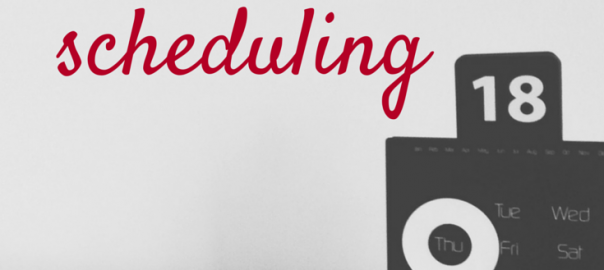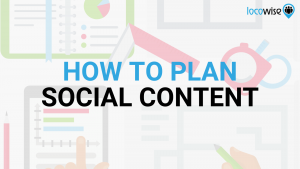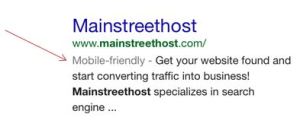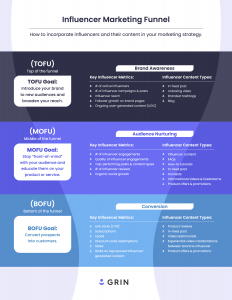Growing and maintaining a social media presence can be a full-time job for growing brands. It’s no surprise that the pressure of real time posting is hard manage while running a business. It’s even harder while you’re still discovering the voice and personality of your brand.
Luckily, there’s a better way to tackle this issue than hoping it goes to plan. Scheduling updates lets brands consider the voice and tone of their social media before taking on the pressure of posting live. For businesses of any size, clear vision will make running an account much easier.

This post will walk you through key decisions that will become part of your social media strategy. “Strategy” might sound corporate or complicated, but it doesn’t have to be. It means that you see the options, make choices and, most importantly, take action.
How to save time with social media scheduling
Be online during social media prime time
All social media platforms, like Pinterest and Twitter, have times when the platforms are most active. These prime times can be a blessing and a curse. They are when the overall platform audience is most active and will be more likely to see your content. At the same time, social media prime times can also that mean your content is more easily lost in the crowd. Like anything else, it’s best to start by experimenting and see what works for you.
According to research by Hubspot and Huffington Post these are the most active times on these social media platforms:
- Pinterest – Friday afternoons & Saturday mornings
- Twitter – Mondays to Thursdays, 9 am – 3 pm
- LinkedIn – Tuesdays – Thursdays, noon & 5 – 6 pm
- Facebook – 1 – 4 pm
- Instagram – 2 am and 5 pm EST
Try posting during these times, and then reviewing your results to decide how to distribute your content over the day and week. We’ll talk more about setting goals and measuring results in the next points.
To start, schedule updates and see if these prime times boost the activity on your posts. Hootsuite is a great free tool for scheduling posts to Twitter and Facebook. For Pinterest, you can use Tailwind’s publish feature or the Tailwind app in Hootsuite, which will then determine which times work best for you based on your audience’s activity.
Choose your social media battleground
Social media is interactive by nature, so you need to commit to the accounts you start and monitor them daily. There can be a lot of pressure to be on all platforms, but it’s important to choose what works for you, and to start small.
No matter what platform you choose, an account that looks abandoned can worry customers. By all means, go to all the platforms you can and reserve your business name. But when you start using social media, add new platforms in one at a time so you can build the new work into your life for the long term.
The other benefit of adding social media to your to do list slowly is that with less stress you’re much more likely to have fun. Your followers are looking for real connection and interaction, so enjoy yourself! It creates a better experience for them, and that’s a win-win.
Don’t literally set it and forget it.
Once you’ve learned how to schedule updates, it’s time to think about how you’ll measure success and how often you’ll check. Start small and don’t put too much pressure on yourself – but if you don’t check your analytics at all you’re cheating yourself.
All social media platforms now offer incredible insight into how others respond to your posts, and that tells you what your audience responds to.
Ignore what your audience likes and your growth will suffer. When you choose to understand less about your customers, you put your business on a dangerous path.
You can see how your posts perform with Twitter analytics or Pinterest analytics, or by using Tailwind’s Pin inspector feature for Pinterest.
Remember that all engagement isn’t equal
Attracting an audience is the first part of the social media battle. I like to think of this part of growth as “empire building mode”, and it’s all about following and interacting with people who seem like your ideal clients.
When people reply to you and engage with your account it’s a big deal! That also means it’s tempting to start using what your followers love as a guide for your content. Any reaction is a good reaction, right?
Consider this: What if your audience can’t stop sharing with the recipes you pin, but if your business isn’t in the food conversation and your ideal client is too busy to cook?
It’s fine to pin pretty things, but it’s important to choose conversations that serve your business. Going off-brand might not hurt your business but being in conversations with your ideal clients almost always helps it.
Similarly, building a following is different than being able to get people to take an action. If you grow your following without this skill, social media can be a time consuming hobby doesn’t boost your business.
Practice asking your audience to take an action early and often and find out what feels like a natural way for you. If you get comfortable asking people to click, comment or share your content, you’ll be ready to ask them to buy when it’s time.
Find your voice!
As a business coach, one of the things that I see clients struggle with is positioning a business in its market. Luckily, it’s one of my favorite things to do with clients!
Defining the unique personality of your brand on social media is a fun and bite-sized way of taking this on. What’s great about this is that you can test drive it right away in your newsletter and client emails. This is an area where a little preparation goes a long way, so jump in and see how it feels!
Knowing the personality of your brand is important because social media is beyond fast paced. It takes a pro to craft an authentic response to whatever comes your way, no matter what happens out in the world or how busy your day is. This way you’ll be closer to what’s right for you instead of wasting time feeling stuck.
Start to define your brand with these prompts:
- What feelings do you want your brand to create in others?
- What types of conversations would you love to build a community around?
- What kind of content do you want to seek out and share?
- What kind of content will you never share?
If you set aside only fifteen minutes to make these decisions you’ll come away with a big investment in your brand. With scheduling savvy, a sustainable approach, goals, a brand voice and lots of practice, you can know you’re going above and beyond for your audience.
(144)
Report Post






